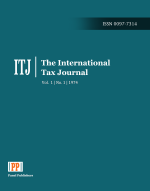The role of urban design in city development: A sociological approach
Keywords:
Urban design, Urban development, City, Social cohesion, Public spaceAbstract
This article aims to analyze the role of urban design in the development of cities through a sociological approach that highlights how urban planning can contribute to building balanced urban spaces both physically and socially.The study is based on the premise that urban design is not merely a technical or aesthetic process, but also a powerful social tool that influences living patterns, daily interactions, and urban practices.The focus is placed on integrating the social dimension into contemporary urban planning by exploring how neighborhood layout, service distribution, public space organization,and land use patterns impact social cohesion and community belonging.The article also discusses how urban planning choices can reduce spatial disparities, improve quality of life,and foster environments that encourage civic participation and social stability.A field-based questionnaire was used to collect data from residents regarding their perceptions of spatial organization in their living environment,their satisfaction with the availability of services,road conditions,lighting,and recreational spaces, as well as their sense of belonging and social security.Through a critical and scientific reading of the collected data,the study seeks to explore the link between spatial planning and social behavior in urban settings and to propose integrated urban policies,that position urban design,as a lever for sustainable development,and spatial justice.
Downloads
References
1. Abu-Lughod, J. (1991). Changing cities: Urban sociology. HarperCollins.
2. Al-Khatib, M. (2017). Urban design: Concept and practice [in Arabic]. Al-Dar Al-Arabia for Science.
3. Bentley, I., Alcock, A., Murrain, P., McGlynn, S., & Smith, G. (1985). Responsive environments: A manual for designers. Architectural Press.
4. Boualem, A. (2020). The impact of urban planning on improving urban quality of life. Journal of Economy and Society, 12(2), 45–60. [In Arabic]
5. Carmona, M., Heath, T., Oc, T., & Tiesdell, S. (2010). Public places, urban spaces: The dimensions of urban design (2nd ed.). Routledge.
6. Cherifi, S. (2019). Urban development and spatial justice in Algerian cities. Journal of Social Sciences, 33(1), 77–93. [In Arabic]
7. Fainstein, S. S. (2010). The just city. Cornell University Press.
8. Gehl, J. (2010). Cities for people. Island Press.
9. Harvey, D. (2012). Rebel cities: From the right to the city to the urban revolution. Verso.
10. Jacobs, J. (1961). The death and life of great American cities. Random House.
11. Lefebvre, H. (1991). The production of space. Blackwell.
12. Lynch, K. (1960). The image of the city. MIT Press.
13. Madani, L. (2018). Urban design and its impact on sustainable development. Journal of Urban Studies, 5(1), 20–38. [In Arabic]
14. Talen, E. (2012). City rules: How regulations affect urban form. Island Press.
15. UN-Habitat. (2020). World cities report 2020: The value of sustainable urbanization. United Nations Human Settlements Programme.
Downloads
Published
How to Cite
Issue
Section
License
Copyright (c) 2025 The International tax journal

This work is licensed under a Creative Commons Attribution-NonCommercial-NoDerivatives 4.0 International License.








